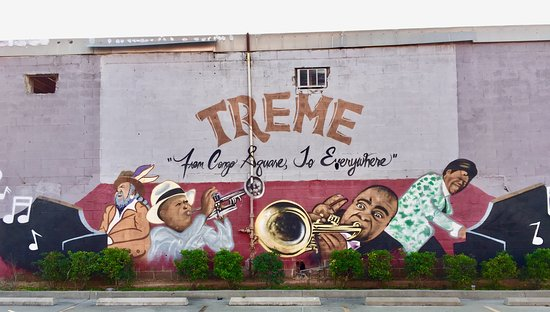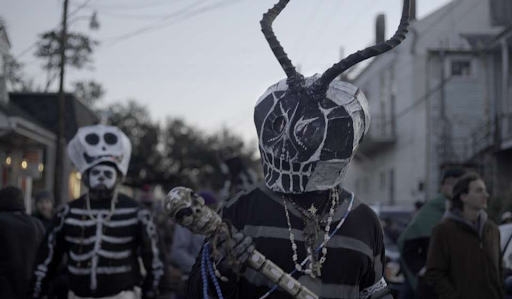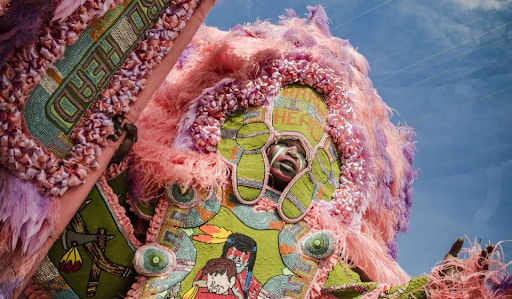Include a Topper!
-
Happy Birthday Banner
$9.00 -
Gingerbread Cake Topper
$15.00
Add Ons
Your cart is currently empty!
Since 1949 celebrating 75 years. Order online or call us at 1 800 GAMBINO (426-2466)

Few neighborhoods in the world can take credit for as many culturally groundbreaking events as New Orleans’ own Faubourg Treme. Though it occupies only a small area of the city, the Treme has had a mighty impact worldwide through the invention of Jazz, initiating the first Civil Rights movement in the United States, and by keeping traditions over two centuries old very much alive.

Today’s Faubourg Treme occupies the land where Claude Treme’s plantation once stood. A hat maker and land developer, Treme began sub-dividing land in 1810 and the newly formed neighborhood was annexed into the city in 1812. By 1841, 80% of the land was owned by free people of color, including slaves who had been able to purchase their freedom. This established the Faubourg Treme as the oldest Black neighborhood in the United States.
Residents of the Treme built a corridor of an estimated 120 businesses down Claibourne Avenue. This thriving commercial district included insurance companies, laundries, restaurants, retail stores, and more. It lasted until 1966 when the city approved the I-10 expressway, bulldozed down dozens of live oak trees to make room for the foundational pillars, and reduced the number of businesses along the Treme portion of Claibourne Avenue by roughly three-quarters.

While the loss of so many businesses was devastating, it was far from the first hardship the Treme community had faced. The Treme had become largely self-sufficient due to the largely Black neighborhood still being seen as “less than” by the city’s other predominantly white suburbs. This social division led to the first Civil Rights movement in the United States.
Just after the Civil War ended in 1865, The Tribune, a Black owned and operated newspaper in the Treme, began to advocate for a “race blind” city. Treme residents listened and began to organize sit-ins on the city’s streetcars and to vote at every opportunity. This led to the integration of not only the streetcars, but of at least a dozen schools in the 1870s, and to the election of a legislative body that was at least half Black. All of these accomplishments were, unfortunately, reversed with the wave of segregation which swept the South at the end of the Reconstruction period.
While political gains were won and lost, one thing remained constant in the Treme: innovation. The musical form called Jazz was born in the Treme’s bars and dance halls. The North Side Skull and Bone Gang began in 1819 from traditional African practices. Rising before dawn on Mardi Gras day, these men appear as horned skeletons out of the darkness, singing and dancing and shouting that any misconduct will bring a “bone man” to your door. Their purpose is to remind you that death is still waiting as you prepare for the festivities of Mardi Gras day.
Another long-held tradition is that of the Mardi Gras Indians. These “tribes” were formed to honor the Native Americans who sheltered runaway slaves around New Orleans. Each year, the members of a Mardi Gras Indian gang will hand sew tens of thousands of beads and feathers to make a “new suit” to wear on Mardi Gras day. They set out at dawn with chants and songs, the most famous being Indian Red. When they encounter a rival gang, the groups will chant, sing, and dance in a symbolic battle until one or the other concedes defeat.

In 2005, when Hurricane Katrina devastated New Orleans, the Faubourg Treme was affected by the flood waters though many of the elevated houses escaped significant damages. However, the displacement of thousands of residents hit the neighborhood hard. Census data shows over half of the Treme’s population wasn’t able to return after the storm. This vacancy led to many out of state buyers snatching up Treme houses and turning them into short term rentals, including more than 800 Airbnb’s in the area.
Part of the plight of the neighborhood was captured in 2010’s HBO series, Treme. Running for four seasons, the show examined the aftermath of Hurricane Katrina through the intertwined lives of several Treme residents. The series won critical acclaim and brought the world’s attention to a neighborhood long neglected by the history books.
For the Faubourg Treme, originator of much of New Orleans’ unique culture, the recognition was long overdue.